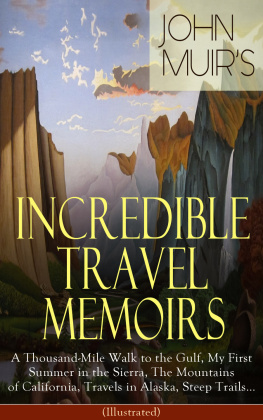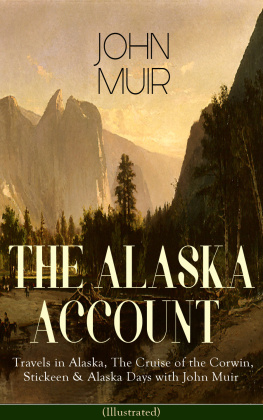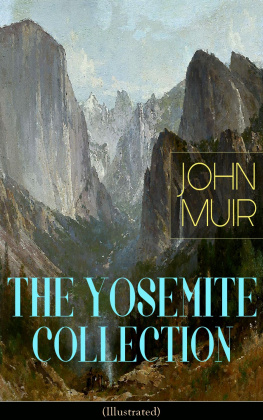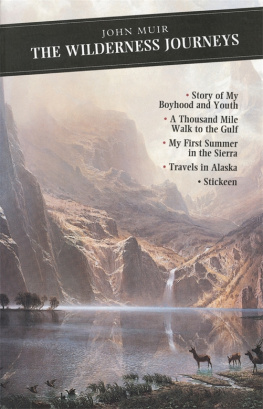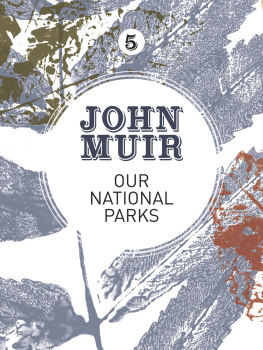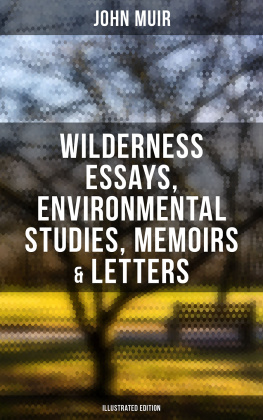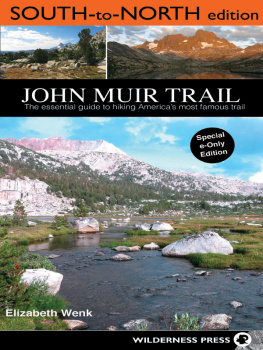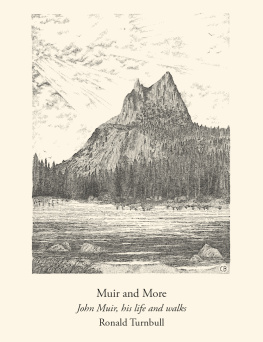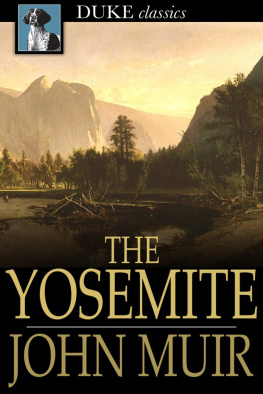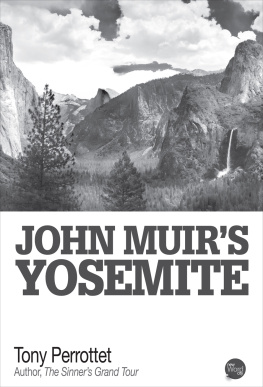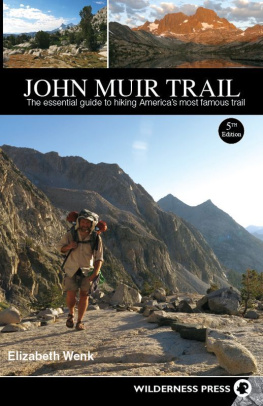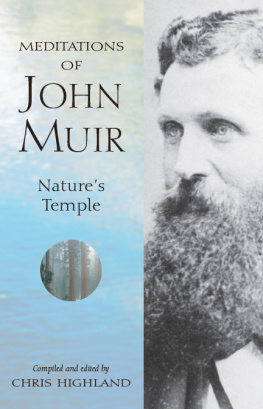John Muir - Wilderness Essays
Here you can read online John Muir - Wilderness Essays full text of the book (entire story) in english for free. Download pdf and epub, get meaning, cover and reviews about this ebook. year: 2020, publisher: Gibbs Smith, genre: Detective and thriller. Description of the work, (preface) as well as reviews are available. Best literature library LitArk.com created for fans of good reading and offers a wide selection of genres:
Romance novel
Science fiction
Adventure
Detective
Science
History
Home and family
Prose
Art
Politics
Computer
Non-fiction
Religion
Business
Children
Humor
Choose a favorite category and find really read worthwhile books. Enjoy immersion in the world of imagination, feel the emotions of the characters or learn something new for yourself, make an fascinating discovery.

- Book:Wilderness Essays
- Author:
- Publisher:Gibbs Smith
- Genre:
- Year:2020
- Rating:3 / 5
- Favourites:Add to favourites
- Your mark:
- 60
- 1
- 2
- 3
- 4
- 5
Wilderness Essays: summary, description and annotation
We offer to read an annotation, description, summary or preface (depends on what the author of the book "Wilderness Essays" wrote himself). If you haven't found the necessary information about the book — write in the comments, we will try to find it.
Wilderness Essays — read online for free the complete book (whole text) full work
Below is the text of the book, divided by pages. System saving the place of the last page read, allows you to conveniently read the book "Wilderness Essays" online for free, without having to search again every time where you left off. Put a bookmark, and you can go to the page where you finished reading at any time.
Font size:
Interval:
Bookmark:
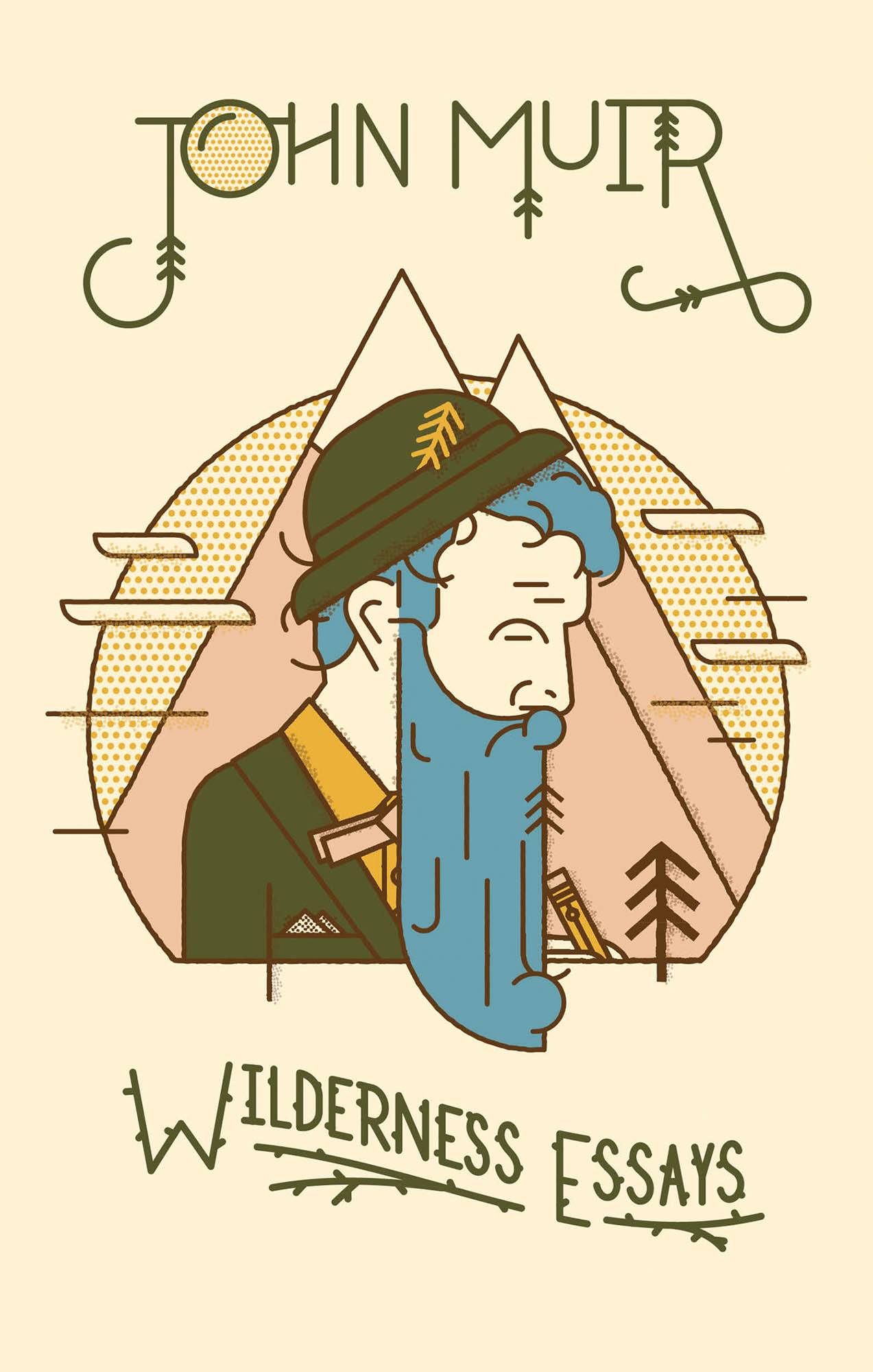
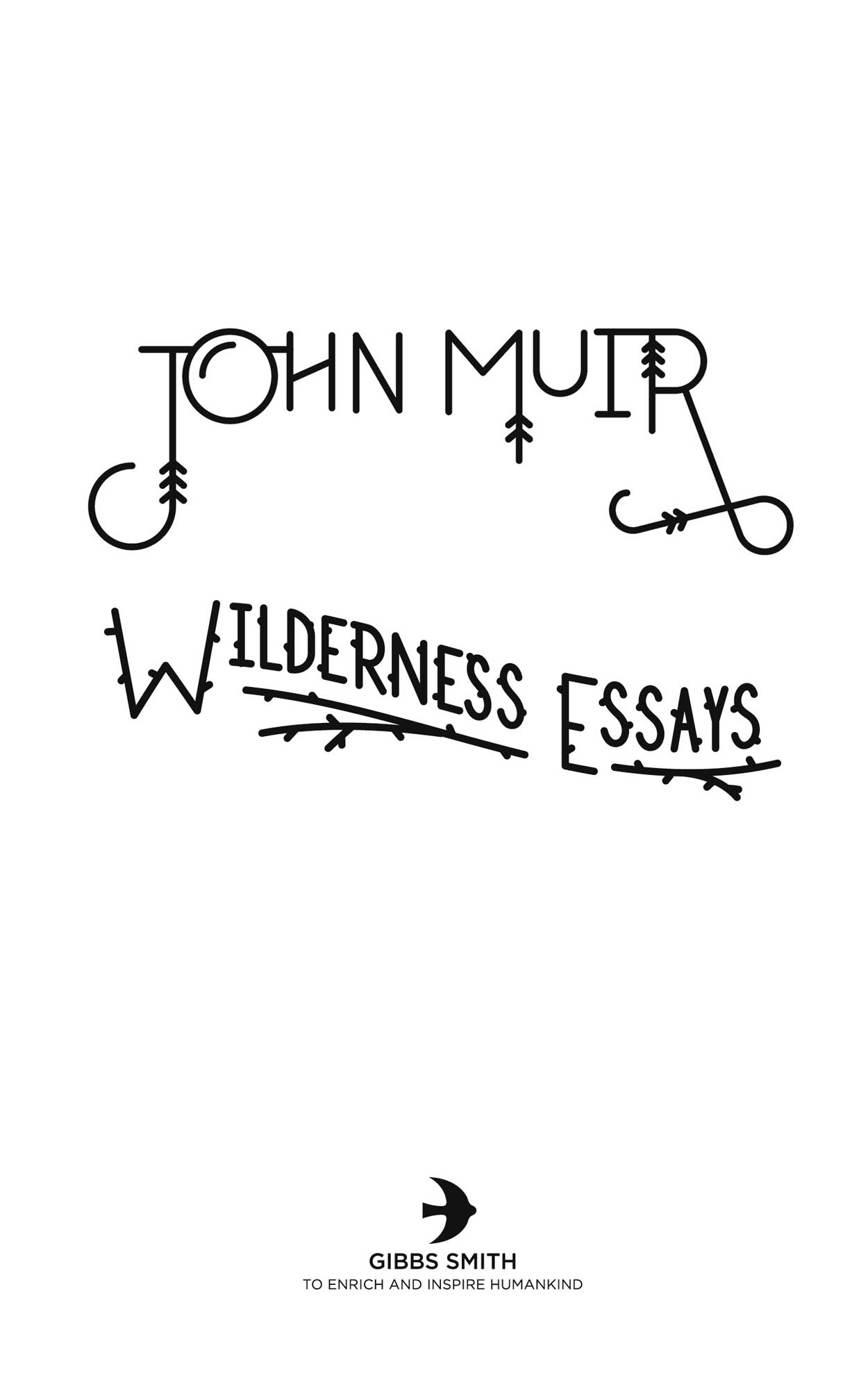
Revised Digital Edition 1.0
Introduction 2015 Gibbs Smith
All rights reserved. No part of this book may be reproduced by any meanswhatsoever without written permission from the publisher, except brief portionsquoted for purpose of review.
Published by
Gibbs Smith
P.O. Box 667
Layton, Utah 84041
1.800.835.4993 orders
www.gibbs-smith.com
Cover designed by Seth Lucas
The Library of Congress has cataloged the earlier edition as follows:
Muir, John. 18381914.
Wilderness essays.
(Literature of the American wilderness)
1. Natural historyUnited StatesAddresses, essays, lectures.
I. Title. II. Series.
QH104.M85 917.9042 80-10844
ISBN: 0-87905-072-1 (first edition)
ISBN: 9781423620082 (ebook updated edition)

Contents

It Is Still The Morning OfCreation
In 1975, during spring quarter at the University of California,Davis, I taught a course for the Division of Environmental Studies called NatureWriters in Nineteenth-Century America. The final works the students read were byJohn Muir: The Mountains of California and several of theessays included in this volume, Twenty Hill Hollow, Wild Wool, and The Animalsof Yosemite.
The next weekend the class and I travelled to Yosemite, which hadprovided much of the material for The Mountains ofCalifornia, to look atand try to seethe things that Muir had seen anddescribed. We found a water ouzels nest, with newly-hatched young, under afootbridge over the Merced River; we walked close to Yosemite Falls and found theplace where Muir had once built a cabin; we saw Half Dome and climbers on ElCapitan. That night we sat atop Sentinel Dome and listened to the music of thewaterfalls as the stars came out; the next morning we had breakfast at Glacier Pointand fed the birds and animals that gathered in friendly fashion around us. If we hadbeen less inhibited, we might have exalted, as Muir once did upon returning from atrip to the High Sierras: It is still the morning of creation, the morning starsare singing together and all the Sons of God shouting for joy!
Who was this man John Muir whose words, written scores of yearsbefore, still had the power to move readers to try to appreciate the wonders of theworld as he saw them? My own interest in Muir was rather easily explained: I hadgrown up on a farm in Wisconsin not far from the region in which Muir, his parentsand brothers and sisters, had cleared a homestead in the wilderness. Later, aftermoving to Alaska, I had travelled through the same areas to which Muir had thrilledon his early visits there and saw the huge ice masses still sculpting the landscape,the glacier mills still grinding the rocks into soil, the mountain fountains inceaseless flow. The air was still soft and like a poultice; the land and watersstill teemed with plant and animal life. Much had changed, but it was still a landJohn Muir would have recognized and in which he would have felt comfortable.
John Muir, born in Scotland in 1838, crossed the Atlantic in asailing ship in 1849 with his father Daniel, his brother David, and his sisterSarah. After they had settled in Wisconsin, clearing the land and building a house,the rest of the family joined them: Mrs. Muir, two brothers and a sister.
For the next ten years, John Muir knew a life that would have beenfamiliar to any pioneer on any of Americas frontiers. Although he had attendedschool regularly in Scotland, there was time for only two months of formal educationduring the next decade. He was too busy with the breaking plow, chiselling a wellthrough a thick limestone layer (and nearly losing his life when gas collected inthe bottom of the excavation), and doing all the other chores normal to making aliving under those circumstances. Daniel Muir believed that the good life, for hissons and daughters, consisted of long hours of hard work during the day and learningBible verses at night. In Scotland, Muir had read whenever possible, as much as hecould, and although his father believed that the Bible was the only book humanbeings could possibly require throughout their journey from earth to heaven, he didrelent when he could be persuaded of the strong moral purpose of a work. Milton andShakespeare were permitted, but Plutarch was forbidden until Muir suggested that thework might contain valuable dietary advice (this at a time when his father wasattempting to enforce strict vegetarianism on the family).
And yet life on the frontier did have its rewards. In writing ofthat glorious Wisconsin wilderness in The Story of My Boyhoodand Youth, Muir spoke of the sudden plash into pure wildnessbaptism inNatures warm heart, and of the lessons in nature that he and his brothers andsisters learned. These experiences became the solid background for the life he wouldlater choose to lead.
Muir left home in the autumn of 1860 without any clear purpose inmind except to display his inventions at the state fair in Madison. Early in1861,just short of his twenty-third birthday, he entered the University of Wisconsinafter a brief preparatory course to make up for his lack of formal schooling.
At the university, Muir signed up for courses with James DavieButler, professor of classics, and Ezra Slocum Carr, professor of natural history,both of whom befriended Muir and were to influence him profoundly. In addition, hemet Carrs wife, Jean, an intelligent and energetic woman with a strong interest inbotany and plant collecting. During their years in Madison, the Carrs had met andbecome friends with Americas most eminent transcendentalist, Ralph Waldo Emerson,on one of his lecture trips to that city. Mrs. Carr read Muir Emersons poem,Woodnotes, and introduced him to other works of Emerson and to the writings ofHenry David Thoreau. She also introduced him to those of her friends in Madison whoshared her interests in nature and the relationship of God and man to it.
Muirs years at the University were an exhilarating and liberatingexperience; they were also times of difficulty for him. Desperately poorhe receivedno help from his fatherhe worked at whatever jobs he could find to try to stay inschool, even teaching one winter in a grammar school in a small community nearMadison. Also, the Civil War had broken out; he was appalled by the senselessness ofwar and troubled by his visits to young men from his home neighborhood whom hevisited at a camp near Madison. It must have occurred tohim that he might be called to serve. After deciding to enter medical school at theUniversity of Michigan, he set out in June of 1863 on a plant-gathering summersramble through Indiana and Michigan, finally making his way to Canada.
The ramble lasted for four years. Muir stopped at least twiceduring this time to work in factories, putting his inventive talents to work toimprove production. He might, in fact, have had a successful career in industry. Butwhen a dropped file was propelled into his eye by a moving belt and he nearly losthis sight, Muir decided to devote his life to a study of the natural world.
During his travels, Muir collected plant specimens and kept up acorrespondence with Mrs. Carr. In a letter to her, written while recovering from hiseye injury, he recalled that he had read an account of the Yosemite Valley the yearbefore, and the two of them discussed in subsequent letters the possibility that oneday the Carrs and Muir would, in fact, see Yosemite Valley. In good health again,Muir returned to Wisconsin to say goodbye to his family and shortly thereafter beganthe journey that took him to California.
Font size:
Interval:
Bookmark:
Similar books «Wilderness Essays»
Look at similar books to Wilderness Essays. We have selected literature similar in name and meaning in the hope of providing readers with more options to find new, interesting, not yet read works.
Discussion, reviews of the book Wilderness Essays and just readers' own opinions. Leave your comments, write what you think about the work, its meaning or the main characters. Specify what exactly you liked and what you didn't like, and why you think so.

